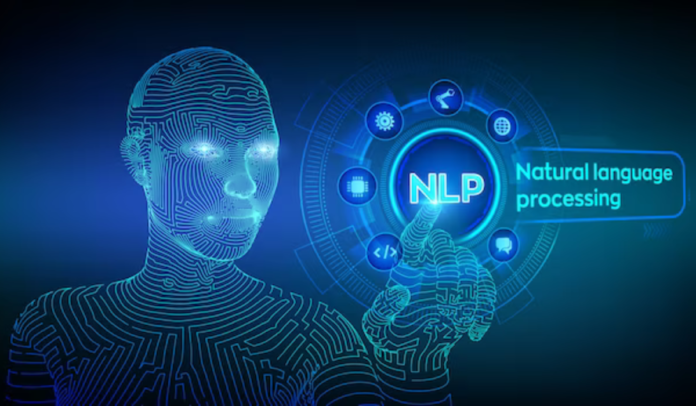Natural Language Processing (NLP) stands at the forefront of technological innovation, revolutionizing the way humans interact with computers and machines. In this comprehensive guide, we delve into the latest advancements in NLP technology, exploring its applications, breakthroughs, and the profound impact it has on various industries and everyday life.
1. Introduction to Natural Language Processing (NLP)
Natural Language Processing (NLP) is a branch of artificial intelligence (AI) that focuses on the interaction between computers and human languages. It encompasses the ability of machines to understand, interpret, and generate human language in a meaningful way. NLP technologies enable computers to process and analyze large volumes of textual data, extract insights, and generate responses that mimic human language patterns.
2. Deep Learning and Neural Networks in NLP
One of the most significant advancements in NLP is the widespread adoption of deep learning techniques and neural networks. Deep learning models, particularly recurrent neural networks (RNNs) and transformers, have demonstrated remarkable capabilities in tasks such as language translation, sentiment analysis, and speech recognition. These models leverage large datasets to learn complex linguistic patterns, enabling more accurate and contextually relevant language understanding.
3. Transformer Architecture: Powering State-of-the-Art NLP Models
The transformer architecture, introduced in the seminal paper “Attention is All You Need,” has become the backbone of many state-of-the-art NLP models, including BERT (Bidirectional Encoder Representations from Transformers) and GPT (Generative Pre-trained Transformer). Transformers excel in capturing long-range dependencies in text, allowing for more effective language modeling, text generation, and understanding of context.
4. Pre-trained Language Models: A Paradigm Shift in NLP
Pre-trained language models have emerged as a game-changer in NLP, significantly advancing the state of the art in various language-related tasks. These models are trained on vast amounts of text data using unsupervised learning techniques, enabling them to acquire a rich understanding of language structures and semantics. By fine-tuning pre-trained models on specific tasks or domains, researchers and developers can achieve remarkable performance improvements with minimal data and computational resources.
5. Multimodal NLP: Integrating Text and Other Modalities
Multimodal NLP is an exciting frontier that involves processing and understanding multiple modes of communication, including text, images, and audio. By integrating information from different modalities, multimodal NLP systems can perform tasks such as image captioning, video summarization, and speech-to-text translation. This interdisciplinary approach opens up new opportunities for more immersive and contextually rich human-computer interactions.
6. NLP in Healthcare: Transforming Clinical Documentation and Patient Care
In the healthcare industry, NLP technologies are revolutionizing clinical documentation, medical coding, and patient management processes. NLP-powered systems can extract valuable insights from unstructured medical texts, such as electronic health records (EHRs) and physician notes, facilitating clinical decision-making, disease surveillance, and personalized treatment recommendations. Additionally, NLP applications in telemedicine and virtual health assistants enhance patient engagement and support remote healthcare delivery.
7. Conversational AI: Enabling Natural Language Interfaces
Conversational AI leverages NLP capabilities to create intelligent chatbots, virtual assistants, and voice-controlled interfaces that enable natural language interactions between humans and machines. These conversational systems can understand user queries, provide relevant information, and execute tasks through dialogue-based interactions. From customer service automation to personalized recommendations, conversational AI is reshaping how businesses engage with their customers and streamline operations.
8. NLP for Social Media Analysis and Opinion Mining
Social media platforms generate vast amounts of textual data, providing valuable insights into public opinions, sentiments, and trends. NLP techniques such as sentiment analysis, topic modeling, and named entity recognition enable organizations to analyze social media content at scale, understand audience preferences, and tailor marketing strategies accordingly. Moreover, NLP-powered tools help detect fake news, monitor online conversations, and mitigate risks associated with misinformation and online abuse.
9. Ethical and Bias Considerations in NLP
As NLP technologies continue to advance, it is essential to address ethical concerns and mitigate biases inherent in language data and algorithms. Biases in training data can lead to discriminatory outcomes and reinforce existing societal inequalities. Researchers and practitioners must adopt ethical guidelines, promote diversity and inclusion in dataset collection and model development, and implement transparency and fairness measures to ensure responsible deployment of NLP systems.
10. Future Trends and Challenges in NLP
Looking ahead, the future of NLP promises continued innovation and expansion into new domains and applications. However, challenges such as data privacy, model interpretability, and cross-lingual understanding remain significant areas of research and development. By fostering interdisciplinary collaboration, addressing societal implications, and advancing fundamental NLP research, we can unlock the full potential of natural language processing and create more intelligent and inclusive AI systems.
FAQs (Frequently Asked Questions)
Q: What are some common applications of NLP technology?
A: NLP technology finds applications in various domains, including machine translation, sentiment analysis, information retrieval, chatbots, virtual assistants, and speech recognition.
Q: How does NLP contribute to healthcare and medicine?
A: In healthcare, NLP facilitates clinical documentation, medical coding, disease surveillance, personalized treatment recommendations, telemedicine, and patient engagement through conversational interfaces and virtual health assistants.
Q: What are some challenges associated with NLP technology?
A: Challenges in NLP include data privacy concerns, model interpretability, biases in training data and algorithms, cross-lingual understanding, and ethical considerations regarding the responsible deployment of NLP systems.
Conclusion
Natural Language Processing (NLP) continues to push the boundaries of what is possible in human-computer interaction, communication, and understanding. With advancements in deep learning, transformer architectures, pre-trained language models, and multimodal NLP, we are witnessing unprecedented progress in language understanding and generation tasks. As NLP technology evolves, it holds immense potential to transform industries, improve healthcare outcomes, enhance social media analysis, and drive innovation in human-machine interfaces. By addressing ethical considerations, promoting fairness and transparency, and tackling emerging challenges, we can harness the power of NLP to create a more connected, intelligent, and inclusive future.


